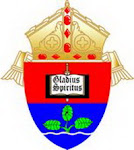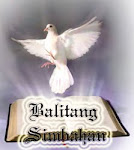
FROM KABIG-BIGAAN TO VIGAN TO CIUDAD FERNANDINA DE VIGAN
Vigan is an island, which used to be detached from the mainland by three rivers - the great Abra River, the Mestizo River and the Govantes River. It is unique among the Philippine towns because it is the country’s most extensive and only surviving historic city that dates back to the 15th century Spanish colonial period.
Vigan was an important coastal trading post in precolonial times. Long before the Spanish galleons, Chinese junks sailing from the South China Sea came to Isla de Bigan through the Mestizo River that surrounded the island. On board were sea-faring merchants that came to barter exotic goods from Asian kingdoms in exchange for gold, beeswax and other mountain products brought down by natives from the Cordilleras.
Immigrants, mostly Chinese, settled in Vigan, intermarried with the natives and started the multi-cultural bloodline of the Bigueños.
In the book, The Philippine Island, Vol. III, p. 276, Blair and Robertson, two letters of Governor General Guido de Lavezares to King Philip II of Spain mentions: “It seemed best to send Captain Juan de Salcedo with 70 or 80 soldiers to people the coast of Los Ilocano on the shores of the river called Bigan.” Salcedo then sailed from Manila on May 20, 1572 and arrived in Vigan on June 12, 1572. He then conquered Vigan, which at that time, was limited at the shore of the Abra River called “El Mestizo”.
Thus, after the successful expedition and exploration of the North, Don Juan de Salcedo founded “Villa Fernandina de Vigan” in honor of King Philip II’s son, Prince Ferdinand who died at the tender age of four. From Vigan, Salcedo rounded the tip of Luzon and proceeded to pacify Camarines, Albay, and Catanduanes.
As a reward for his services to the King, Salcedo was awarded the old province of Ylocos which then composed of the Ilocos Norte, Ilocos Sur, Abra, La Union and some part of Mountain Province as his Encomienda and was accorded the title as Justicia Mayor de esta Provincia de Ylocos.
In January 1574, Salcedo returned to the capital of his Encomienda, Vigan, bringing with him some Augustian Missionaries to pioneer the evangelization of Ylocos and established a Spanish city, for the purpose of controlling the neighboring country. On the early years of his return, Villa Fernandina flourished on account of the garrison and the gold trade. After some years, the villa deteriorated due to plagues and became a hardship post. This lead to the union of Villa Fernandina to Vigan and were jointly administered by one Alcalde de Mayor. The union became more economically beneficial prompting authorities to attach the villa to the bigger trade post of Vigan.
Governor General Gomez Perez Darmarinas, in his Account of Encomienda dated in Manila on May 31, 1591 states: “The town of Vigan called Villa Fernandina has five or six Spanish citizens with one priest, a Justice, one Alcalde Mayor (Governor) and a Deputy. The King collects 800 tributes (equivalent to 3,200 subjects). During this period, the old Vigan was composed of 19 barrios.
In 1645-1660, Vigan was already divided into 21 Cavezas de Barangay as mentioned in the “Libro de Casamiento”, the oldest records of the parish house of Vigan found in its Archives. Separated from the naturales, the Chinese have their own place of settlement called pariancillo, “Los Sangleyes del parian” and the Spaniards were residents in a villa called “Los Españoles de la Villa”.
How Vigan got its name is told from an anecdote carried by the tongue of generations, which tells of a Spaniard walking along the banks of the Mestizo River. There, he met a native of the place and stopped to inquire: “Como se Ilama usted de esta lugar?”
Not understanding a word of Spanish, the native scratched his head and upon seeing that the Spaniard was pointing to a plant, exclaimed in Ilocano: “Bigaa Apo”. Bigaa being Alcasia Macroniza, a giant Taro plant belonging to the Gabi family which used to thrive at the bank of the Mestizo River. From the name of the plant – Bigaa, whence Vigan derived its name.
THE CIUDAD FERNANDINA DE VIGAN
The Episcopal See of Manila was erected by Pope Gregory XVIII with the publication of his Bull Fulti Praesidio on December 21, 1581. It was elevated into a Metropolitan Church on August 14, 1595 through the Bull of erection of Pope Clement VIII with the Diocese of Santsimo Nombre de Jesus in Cebu, the Diocese of Nueva Caceres in Naga and the Diocese of Nueva Segovia in Lallo, Cagayan as its suffrage.
The Bull of Pope Clement VIII likewise elevated the seat of the four diocese including Lallo, Cagayan to the dignity of a city being the center of evangelization in their respective territories.
For 160 years from 1595 to 1758, all the Bishops of the Diocese of Nueva Segovia in Lallo Cagayan, starting with Fray Miguel Benevides, the first bishop, to Fray Diego de Soria preferred to stay in Vigan due to the deteriorating condition of Lallo at that time. Malaria was endemic to the place and was constantly flooded during the rainy season. The Rio Grande de Cagayan was eroding and destroying the site of the Diocese leading to a progressive decay of the town.
In sharp contrast, Vigan, during the same period, was a flourishing Spanish settlement nearer to Manila. It was fast developing into the center of Spanish influence and politico-economic power in the north.
When Don Juan dela Fuentes de Yepes became Bishop of Nueva Segovia in 1755, he requested the King Spain and the Pope for the transfer of the Diocese from Lallo, Cagayan to Vigan, which was at the height of its progress as center of religious, commercial and socio-cultural activities.
He summoned three former Alcalde Mayores: Don Maximino Ballero of Vigan, Don Juan Antonio Panelo of Pangasinan, and Don Francisco Ledem of Cagayan to testify and give their support of the requested transfer of the Diocese. Aside from the former Alcalde Mayores, Bishop Yepes also solicited the favorable endorsement of Fray Bernardo Ustaris of the Dominican Order and Fray Manuel Carillo of the Augustinians.
The transfer of the Seat of the Diocese of Nueva Segovia from Lallo, Cagayan to Vigan was formally approved during the Pontificate of Pope Benedict XIV during the reign of Fernando VI, King of Spain by virtue of the Royal Decree of September 7, 1758.
By this Royal Decree, Vigan which became the new seat of the Diocese, automatically elevated its status as a City known as Cuidad Fernandina de Vigan in honor of the then current King of Spain.
By 1764, there were already 21 sitios or barrios in Vigan as mentioned by Father Pedro de Vivar in the document entitled as “Relacion de los Alzamientos dela Cuidad de Vigan, cavesera dela provincia de Ilocos Sur el los años 1762 y 1763.”
In 1803, Cuidad Fernandina de Vigan has a population of 10,585 souls with 1,966 paying tributes. The natives were working on agricultural land and the mestizos engaged in business with other provinces including Manila. The mestizos played a very important role in the progress and prosperity of the city of Vigan.
The Chinese in Vigan on the other hand, settled in a place called “Pariancillo” while in Manila they were in “Parian”. With their talent and knowledge in business as well as their skills and mastery of the art of manufacturing, the Chinese became rich and powerful in society. They opened business in the heart of Vigan, employed the naturales, intermarried with the natives and mestizos of Vigan and as time passed by, they rose into the class of the elite. They triggered a business boom in the community and engaged in domestic and foreign trade. They exported indigo, lime, maguey, basi, jars, tobacco, woven cloth called abel, and other local products to Europe, China, Borneo and Malaysia. As a consequence of this business boom, there was a mark change in the lifestyle of the inhabitants.
Found in the Philippine Archives in Manila is a report in 1870 describing Vigan, the place. West of the cathedral is the Casa Real and the monument of Salcedo, north of the cathedral is a small house, south of the cathedral is the Seminary. West of the Seminary were the hacienda publica, barracks of the Carabineros and the Ayuntamiento Municipal.
To further justify the to category of Vigan as a city are the documents from “Instituto de Historia Programa de Modernization del Archivo Nacional de Filipinas” describing that Vigan has its own carcel, casa de gobierno, mercado publico, Provincial High Court and one of the only four (4) Public Works District in the entire Island of Luzon. More importantly, it has an Audencia Territorial, an implicit indication that it was a City.
Ecclesiastical and public documents extracted from the Archivo Nueva Segovia correspondingly attest that Vigan is a city. The Libro De Casamientos (Book of Marriage), Libro De Entierros (Book of Death) and Libro de Bautismos (Baptismal Book) of 1758 up to 1937, refer to Vigan as Ciudad Fernandina de Vigan or de esta ciudad.
Moreover as extracted in the Philippine Archives, the Real Cedula of February 2, 1818 which divides the Ylocos into two separate provinces, Ilocos Sur and Ilocos Norte, clearly states that: “The first (Ilocos Sur) comprises the town of Namacpacan, Balaoan, Bangar, Tagudin, Santa Cruz and its annex, Sta. Lucia, Candong, Santiago, San Esteban, San Jose, Santa Maria, Narvacan, Santa Catalina de Baba, Banguen, Tayum, Vigan, Bantay, Santa Catalina, San Vicente, San Ildefonso, Santo Domingo, Magsingal, Lapo, Cabugao and Sinait: and having the City of Vigan as its capital.”
THE HISTORIC VIGAN
As one passes through the narrow and paved streets of Vigan, the hand of history is everywhere, with the imposing monuments, status and historical landmarks and inscriptions relentlessly reminding us of the most outstanding and widespread uprising in Ilocos History against the tyranny and abuses of the Spaniards. Diego Silang and his men assaulted and captured Vigan, proclaiming is as the capital of “FREE ILOCOS”. But in May 1763, Silang was assassinated by the traitors Miguel Vicos and Pedro Becbec. The brave and faithful wife of Diego, Maria Josefa Gabriela Silang, assumed leadership of the uprising but was later captured by the Spanish and was publicly hanged in Vigan on September 20, 1763.
Vigan is the birthplace of a quite number of great and famous men … Floro Crisologo, lawyer, soldier, orator, statesman, and parliamentarian; and Fidel Antiporda Go, National Artist.
At present, Vigan was inscribed in the UNESCO World Heritage List of Sites and Monuments last December 2, 1999 which now includes 630 cultural and natural properties of exceptional universal value in entire the world and one of the only five heritage sites found in the Philippines. With its inclusion in said prestigious list of world heritage sites, Vigan has become a source of pride, and a national symbol of the Filipinos.
















No comments:
Post a Comment
You may also E-mail us at dzns@cmn-ftd.org or dennisjavillonar@yahoo.com and davidjustin2008@hotmail.com for your comments, reactions as well as your suggestions.